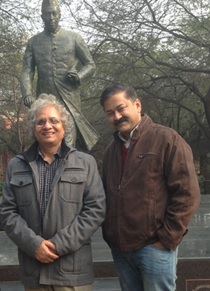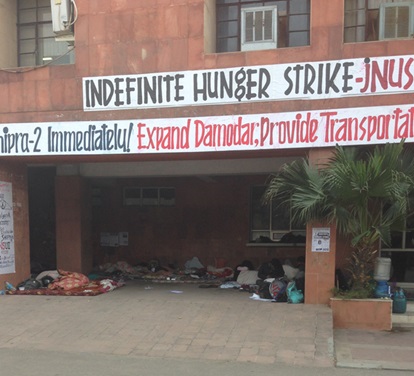What India?
There is literally day and night difference between India and the United States, it has been that way since forever , and will remain so forever, no doubt. That is simply due to the geographic location of the two countries on the opposite ends of the globe. But contrasts don’t end there. We already know Indians drive on the left and Americans on the right. That can be attributed to the British legacy on India, but what about electric switches to be pressed down to turn them on in India, and the other way around in the US, or an owl considered a foolish bird in India while a wise one in America. The list goes on.. so would the twilights ever meet? It depends…
That was the frame of my mind when for the first time since leaving the country in 1983 I visited India for four continuous months as a Visiting Professor at Jawaharlal Nehru University, popularly known as JNU. Even though I have traveled to India 2-3 times a year for the past 15 years, and a little less frequently for 17 years before that, this visit allowed me for the first time to gaze at the place and events more thoroughly from inside and outside perspective.
JNU was good to place to be, and it was pleasant weather at least in the day time, and even night time compared to the atrocious snow storms and below zero degree temperatures my fellow New Englanders had to endure. JNU has a true national, nay make it international, outlook in India for courses it offers, faculty outreach, political activities, and student population, and being located in Delhi makes it more relevant. Government ministers and major political leaders are common visitors to the campus on a weekly basis. When I was student at JNU in early 80s it used to be considered as the 23rd state of India (there were only 22 states those days as opposed to 29 current states) because of the political and intellectual importance that were attached to it, especially the Prime Minister of the country used to be its Chancellor.
A lot has changed about JNU, as is about India, but there is eerie retention of some of old ways and adoption of new ones. I taught a course on Science and Technology in Sanskrit, a subject that had already become political before my classes started, in part due to the Prime Minister Narendra Modi’s reference to Lord Ganesha’s elephant replacement as an evidence of advanced surgery in ancient India. Also, he had apparently mentioned at the All India Institute of Medical Sciences, New Delhi, that Indian scientists should investigate aura that is created with practice of yoga. Leftists in JNU, and other intellectuals as well, were livid at this, and justifiably so even if only to a certain degree.
This semester long stay and travel in India provided me with opportunity to meet many academics, scholars, intellectuals, media, and government officials, including central government ministers. I observed a new hope and energy in the air amidst many socio-political changes in India. I feel a transformative moment has arrived in the history of India, and consequently the world, as the path 1.3 billion Indians choose to take in the next 5-15 year time frame will determine the fate of the world in terms of environmental sustainability, human health, socio-political paradigms, and peace & prosperity.
Historically India has provided these turning points in the world events for very long, and the basis of its destiny driven role is worth considering. My personal, social, professional, and official interactions provide a narrative that should be of interest to the public, which I hope to share through brief articles through column.



